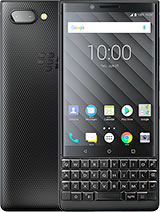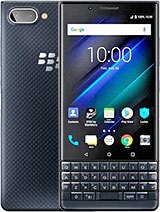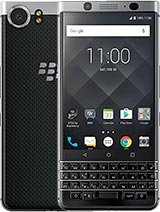BlackBerry KEYone vs Priv: From RIM to TCL, was this the right move? | Pocketnow By Pocketnow
During our BlackBerry coverage, one of the top phones requested for a comparison, was unsurprisingly the Pres less a proper comparison, which phone is more worth it for the money, but more a way to gauge the evolution of this brand. There's something poetic about examining the last phone made by BlackBerry's Hardware team and the first QWERTY phone made by partner TCL. So are we on the right track? The BlackBerry name carries a reputation for business grade communication gear, durable, professional, the key one design executes this idea, wonderfully the metal frame and drippy back is my personal favorite combination of materials and I haven't been this happy with the feel of a phone since the Galaxy Note 4, the printer Finley looks the part, and this rear material has a great texture to it, but the BlackBerry built phone manages to feel a little more fragile. The slight screen shift from the slider or the easily depressed backplate after some terrific hardware experiments the privilege that last little of polish, we would have expected from this company immediately. We should look at the signature feature for both phones, the hardware keyboards, and there are many similarities. Capacitive sensors allow for trackpad like scrolling, and each key can be customized for shortcuts in operation.
On my to review phones, the key travel on the key one feels more consistent, especially on the border keys, which have a bit more click than on the Drive. The extra engineering on the space bar is appreciated to where the prints pace bar feels downright mushy. By comparison, key one is an all-around improvement and this hardware is used more consistently throughout the phone's UI. The only criticism, it's pretty easy to accidentally activate the capacitive controls right above your Hardware keys, especially when scrolling- and this is where the prison philosophy suffers- sliding the keyboard away. We wonder how many people bought this phone and only occasionally use its signature.
Hardware feature like the folks who used to buy the note for the larger screen and rarely used the s-pen previous blackberries were organ Amish champions, but the prints appeal to everyone execution is somewhat inelegant. This is a really tall gadget to be using on the go. The Driven ice screen, though higher resolution and a contrast, the AMOLED panel, but this might be contributing to the power and throttling issues driving more dots on the display. The key ones LCD is no slouch readable in sunlight and with a respectable pixel density for its 4.5 inch diagonal. My main gripe for both phones, curved glass on the edges of both displays, makes fitting a glass screen protector, more difficult, I know business people like pretty design accents, but a flat front face would be more practical for the intended audience.
Moving to the tech inside blackberry made their move to Android during one of the worst years for Qualcomm chipsets companies with more resources and experience, and optimizing for Android managed better operation out of the Qualcomm 808, but blackberries struggled the privy I, often to the point of inconsistent performance and throttling. By contrast, the key one looks less impressive on paper with a mid-tier processor, but TCL makes far better use of this hardware. No one would accuse the key one of being a speed demon, but it's easy to get a feel and an expectation for how we'll perform, which apps might take an extra second to load when the privy is cool, it's faster, but the swing in throttled performance is far more noticeable than the occasional stutter you might find on key one. Optimization is critical and TCL is significantly better equipped to maximize the use of this hardware. Neither phone is a multimedia champ.
Headphone output is more than adequate for phone calls, but ranks low for music and movie playback. The Prince Tors, a significant victory for speaker tech simply for pointing the speaker in the right direction. With this forehead and TCL's expertise, we were hoping for at least a mono front firing solution on the key one. The camera battle is also nuanced. Overall I prefer the still shots from the key one, using a slightly larger sensor with a lower resolution and a faster aperture.
The prim score is a handy victory for video. However, while both phones can shoot, UHD footage the Driven Of fit's significantly from Hardware stabilization. Lastly, the battery contest is no contest. The key one absolutely demolishes the Driven benching and in real-world use again. Consistency is key.
I can count on the newer phone to last, at least two full days of moderate use. Sometimes the probe is well-behaved lasting to dinnertime and other times. My pocket feels like it's about to ignite, and the phone is dead before lunch. Each phone's performance is mirrored and recharging the key one consistently charges quickly and stays cooler, regardless of what you task it with while plugged in the probe, will sometimes stop off quickly, but often it will trickle charge, especially if anything is running. In the background see I like to upload my photos to cloud storage when the phone is plugged in and connected to, Wi-Fi, which happens to be a perfect recipe to kill the probe routinely after about 20 minutes on a charger.
I'd find I'd actually lost a few battery percentage points, and if your phone starts updating apps, you can forget about topping off the battery. So let's wrap this up. How far have we come in? Moving from the Drive to the key one, you know, blackberry is doing better quite a bit better. The prints' failure might have been in trying to do too much a bigger screen for multimedia tucking, the keyboard away out of sight and delivering that during the darkest days of a terrible chipset generation from Qualcomm. What's exciting here, blackberry and TCL seem to have learned from that misstep newer, Android powered phones benefit from more specific focus.
Instead of trying to dump everything into one handset DAC offers a more powerful chipset and a bigger screen, while key one focuses on marathon use and killer communication features. This is the right way to go key. One emits a few of the fun features I like on other handsets to deliver a focus on communication and productivity. This is fantastic progress, and it would seem the BlackBerry brand is in good hands, as always, thanks. So much for watching is sure to subscribe to this channel for more comparisons like these and help us out with some sharing on your favorite social networks for Pocket, I'm Juan Carlos back now, some gadget guy on Twitter and Instagram, and I will catch you all on the next review.
Source : Pocketnow



























